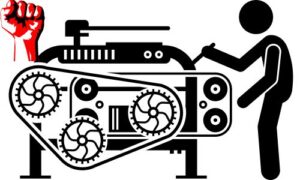The most commonly used statistical technique in data collection and analysis is descriptive statistics. Statistics is a branch of mathematics concerned with the collection and analysis of data.Statistics involves number calculation and interpretation. Some students, while intrigued by it, may find certain concepts challenging to comprehend. These students can seek statistics homework assistance from online experts. Descriptive statistics use tables and graphs to visually represent data. This blog will cover various types of descriptive statistics.
Descriptive Statistics: What Are They?
Descriptive statistics encompass calculations aimed at providing a comprehensive overview of the dataset. Knowing specific metrics, trends, and information about your data allows you to make more informed decisions about the data, create better visualisations, and conduct more complex analyses. It is critical to be able to make decisions based on your data. If you discover that certain sets of data are similar, you may want to group them together in a chart or chart series based on the variables you have available. Descriptive statistics are a great way to learn more about your data and perform better analysis.
How Should Descriptive Statistics Be Interpreted?
The first step in understanding data is to use descriptive statistics. The first question you must ask yourself is, “What is the data attempting to show?” The data is attempting to demonstrate whether or not the means differ. To answer this question, we must first define a mean. A mean is a statistical measure that represents the average value.
The mean of a population is found by summing all values and dividing by the total count. For a sample mean (denoted by X), sum values and divide by the sample size.
Descriptive Statistics Types
Descriptive statistics aid readers in a clear and comprehensible interpretation of data. They endeavor to summarize data, often termed as an “abstract,” presenting an initial overview before in-depth analysis.
Because the goal of descriptive statistics is to summarise a given set of data, they differ from other types of statistics. The following are some examples of common descriptive statistics:
Frequency Measurements
The study of quantitatively characterising the properties of a collection of data is known as descriptive statistics. Frequency analysis is one type of descriptive statistics. In statistics, the frequency of an occurrence is defined as the number of times it occurs. Frequency Analysis is a statistical branch that investigates the number of occurrences (frequency) and evaluates metrics such as central tendency, dispersion, percentiles, and so on.
Central Tendency Measures
A measure of central tendency (also known as a measure of centre or central location) is a summary measure that attempts to summarise an entire set of data by using a single number to represent the middle or centre of its distribution. The three primary metrics of central tendency are the mode, median, and mean. Each of these metrics provides a unique indication of the distribution’s average or core value.
Dispersion or Variation Measures
A measure of variability is a summary statistic that captures the degree of dispersion in a dataset. How far are the values apart? Measures of central tendency show the average value, whereas measures of variability show how far away from the centre the data points tend to fall. Variability is discussed in the context of a value distribution. A low dispersion indicates that data points are tightly clustered around the centre. When they have a high dispersion, they tend to fall further away.
Positional Measures
A measure of position identifies the location of a single value in relation to other values in a sample or population data set. Descriptive metrics using quantiles remain unaffected by outlier observations, unlike mean and standard deviation. Consequently, quantile-based measurements are often favored over mean and standard deviation measures.
What Is The Difference Between Inferential Statistics And Descriptive Statistics?
Statistics is a branch of mathematics that enables researchers to gain insight into a wide range of situations. Simply put, statistics examines and quantifies the frequency of various occurrences or events. Achieved by analyzing a representative sample, this offers a broad overview of the situation. Statistics fall into two categories: descriptive and inferential. Descriptive statistics, the more common type, involve organizing collected numbers into datasets.Inferential statistics is more complex, involving the use of statistics to reach a conclusion based on a data set. Frequency distributions, charts, graphs, and the Z-score are among the statistics available.
How Should Descriptive Statistics Be Used?
Utilized to showcase the traits of a singular population within a specific circumstance or setting, descriptive statistics are essential.They are useful for exploring previously collected data to see if it fits a specific pattern. Measures such as the mean, median, standard deviation, and frequency distribution are examples of descriptive statistics. Descriptive statistics are essential for understanding a population’s data because they allow us to compare the data to see if it fits a particular pattern or if it is normal or abnormal.
Finally, Some Thoughts!
Descriptive statistics provide information about the sample population under consideration. It aids us in describing the entire sample. Mean, mode, minimum, maximum, range, standard deviation, midrange, interquartile range, variance, range, and quartile deviation are the most used descriptive statistics. We hope you enjoyed our descriptive statistics post!






